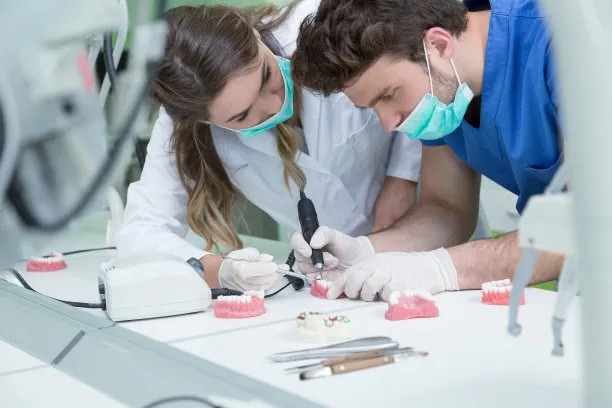Essential Safety Guidelines and Precautions to Ensure Successful Root Canal Treatment Outcomes for Patients
Summary: This article explores the essential safety guidelines and precautions crucial for ensuring successful root canal treatment outcomes for patients. Root canal therapy, a common dental procedure, aims to relieve pain and save infected teeth. However, its success greatly depends on adhering to safety protocols from pre-treatment evaluations to post-operative care. This article is structured into four main sections: patient evaluations and assessments, sterile environments, appropriate techniques and materials, and effective post-treatment care. Each section outlines specific measures aimed at enhancing treatment quality while minimizing risks. By following these guidelines, patients can achieve optimal outcomes and prolong the health of their teeth.
1. Patient Evaluations and Assessments

The initial step for a successful root canal treatment involves comprehensive patient evaluations and assessments. This includes detailed medical histories which provide dentists with essential insights into the patients overall health. Knowing previous allergies, medications, and health conditions can influence treatment protocols.
During the evaluation, dentists typically perform a thorough clinical examination, often utilizing diagnostic tools such as X-rays. These images help identify the extent of infection or damage to the tooth, allowing the dentist to craft a suitable treatment plan tailored to the specific needs of the patient.
Furthermore, patient communication is crucial. Dentists should engage in detailed discussions with their patients regarding the procedures, potential risks, and expected outcomes. This ensures that patients are well-informed and can provide consent based on a clear understanding of the treatment they are about to undergo.
2. Maintaining a Sterile Environment
Creating and maintaining a sterile environment is paramount to prevent infections during root canal treatments. Dental offices should adhere to strict hygiene standards, including sanitizing tools and equipment used in the procedure. This minimizes the risk of introducing pathogens into the tooth during treatment.
Additionally, personal protective equipment (PPE) is essential. Dentists and their assistants must wear gloves, masks, and eye protection to protect both the patient and themselves. This practice not only prevents cross-contamination but also creates a safe space wherein the patient can undergo treatment comfortably.
Moreover, proper sterilization techniques should be employed for endodontic instruments. Utilizing autoclaves and chemical disinfectants helps to ensure that all tools are free from any microbial presence. Regular audits of sterilization processes can further enhance safety in the dental office.
3. Utilizing Appropriate Techniques and Materials
The success of root canal treatments also hinges on the use of appropriate techniques and materials. Dentists must stay updated on the latest advancements in dental technology and best practices to enhance treatment efficacy. This includes selecting the right files and irrigation solutions suited for each patients specific dental needs.
Moreover, continuous education and training improve a dentists skill set, enabling them to employ modern techniques, such as electronic apex locators and 3D imaging for precise treatment planning. Implementing these technologies can lead to better outcomes and shorter recovery times for patients.
It is also vital for dentists to ensure that they are using biocompatible materials for filling the root canals. Using high-quality sealers and gutta-percha helps provide a long-lasting seal, preventing future reinfection and promoting healing. This careful selection of materials contributes significantly to the success rate of root canal treatments.
4. Effective Post-Treatment Care
Post-treatment care is essential for ensuring full recovery and the success of root canal therapy. Dentists should provide clear instructions regarding pain management, including the appropriate use of over-the-counter medications or prescribed pain relievers. This guidance helps patients navigate their recovery journey with ease.
Furthermore, follow-up appointments play a pivotal role in monitoring the healing process. These visits allow dentists to evaluate the treatment outcomes and address any complications that may arise, ensuring that the tooth is healing properly and functioning as expected.
Finally, educating patients on maintaining oral hygiene post-treatment is crucial. Dentists should emphasize the importance of regular brushing, flossing, and attending routine dental check-ups to prevent further issues and sustain a healthy dental environment.
Summary:
In summary, successful root canal treatment requires a multifaceted approach grounded in essential safety guidelines and precautions. From thorough patient evaluations to maintaining a sterile environment, utilizing appropriate techniques, and ensuring effective post-treatment care, each aspect is vital to achieving optimal outcomes.
Adhering to these guidelines not only safeguards the patient but also contributes to the overall efficacy of the procedure, ultimately restoring their dental health.
This article is compiled by Vickong Dental and the content is for reference only



